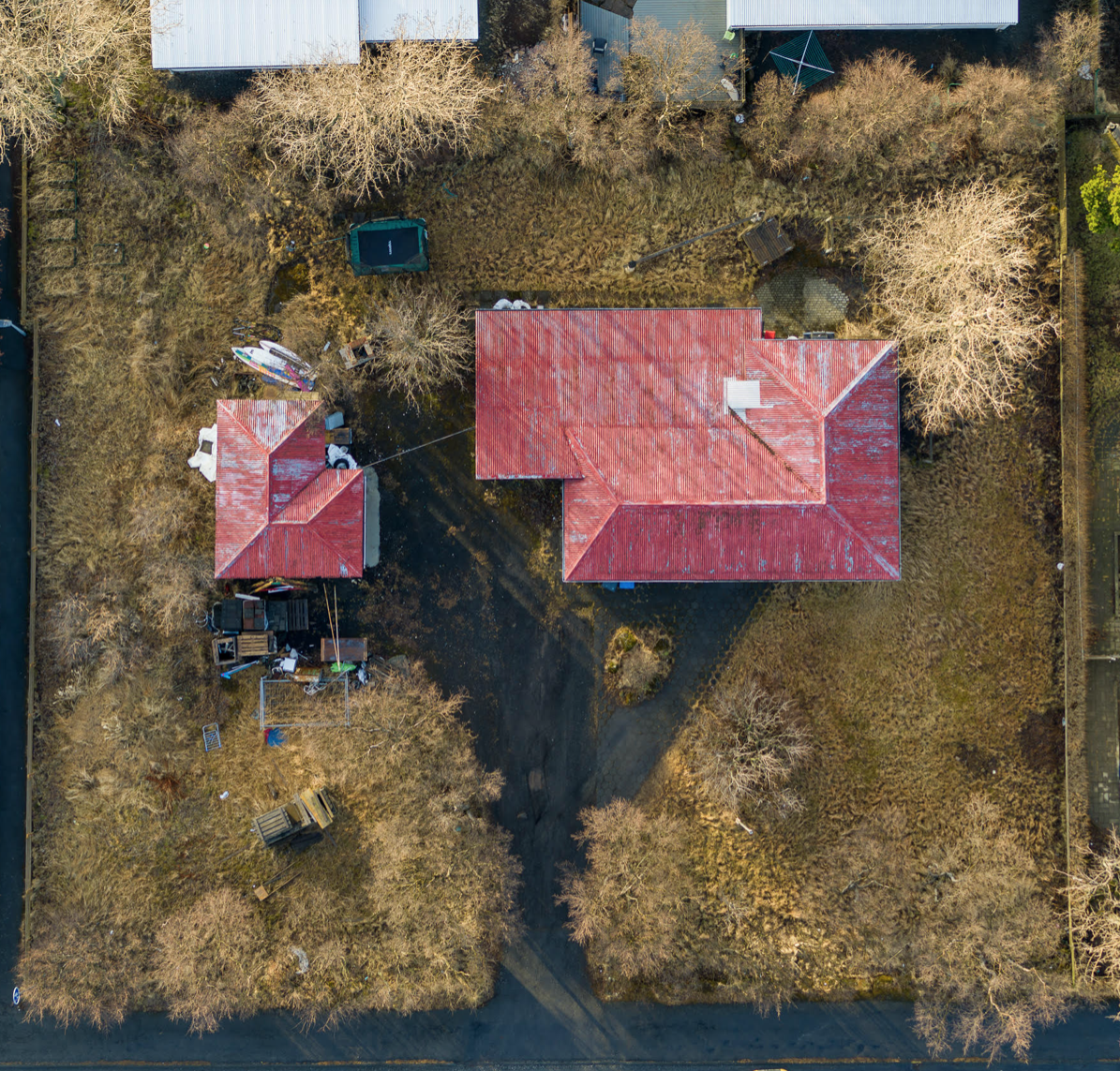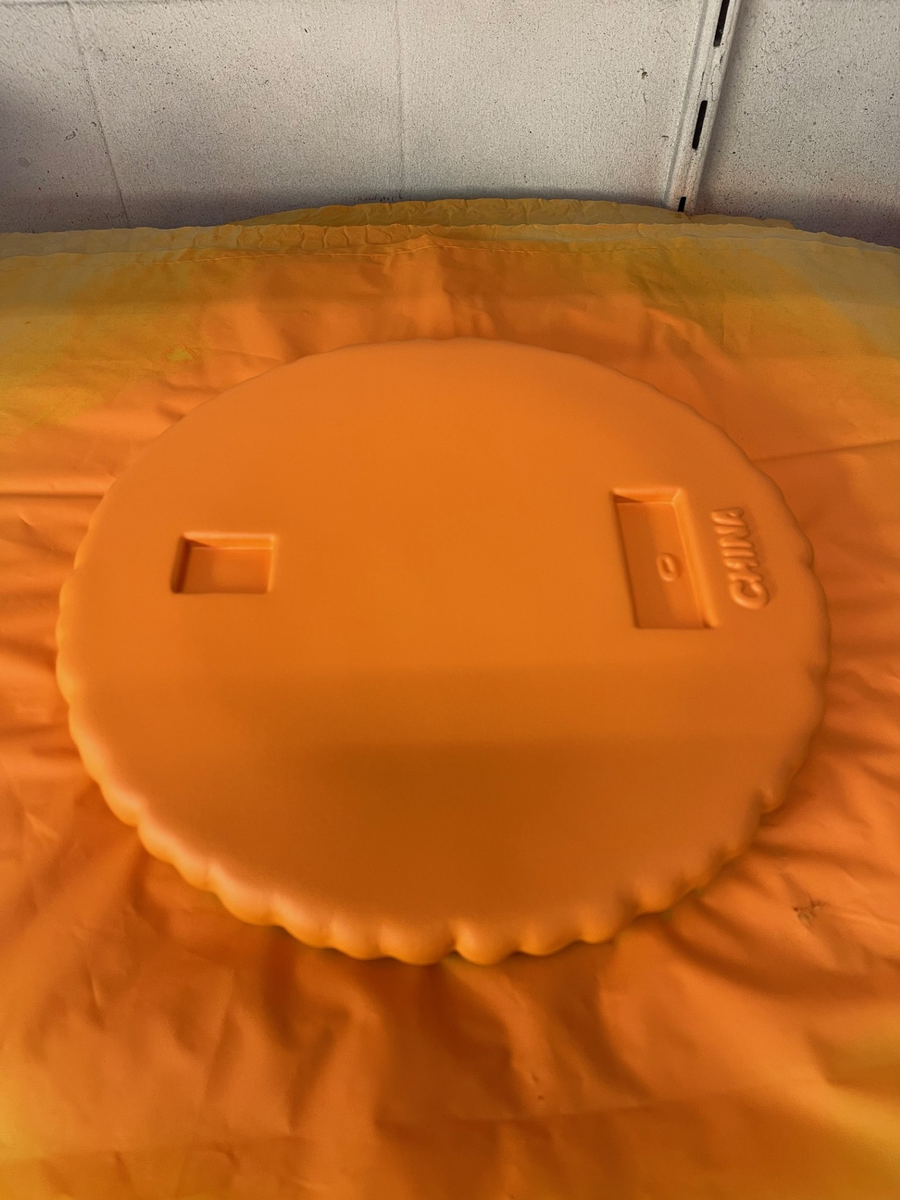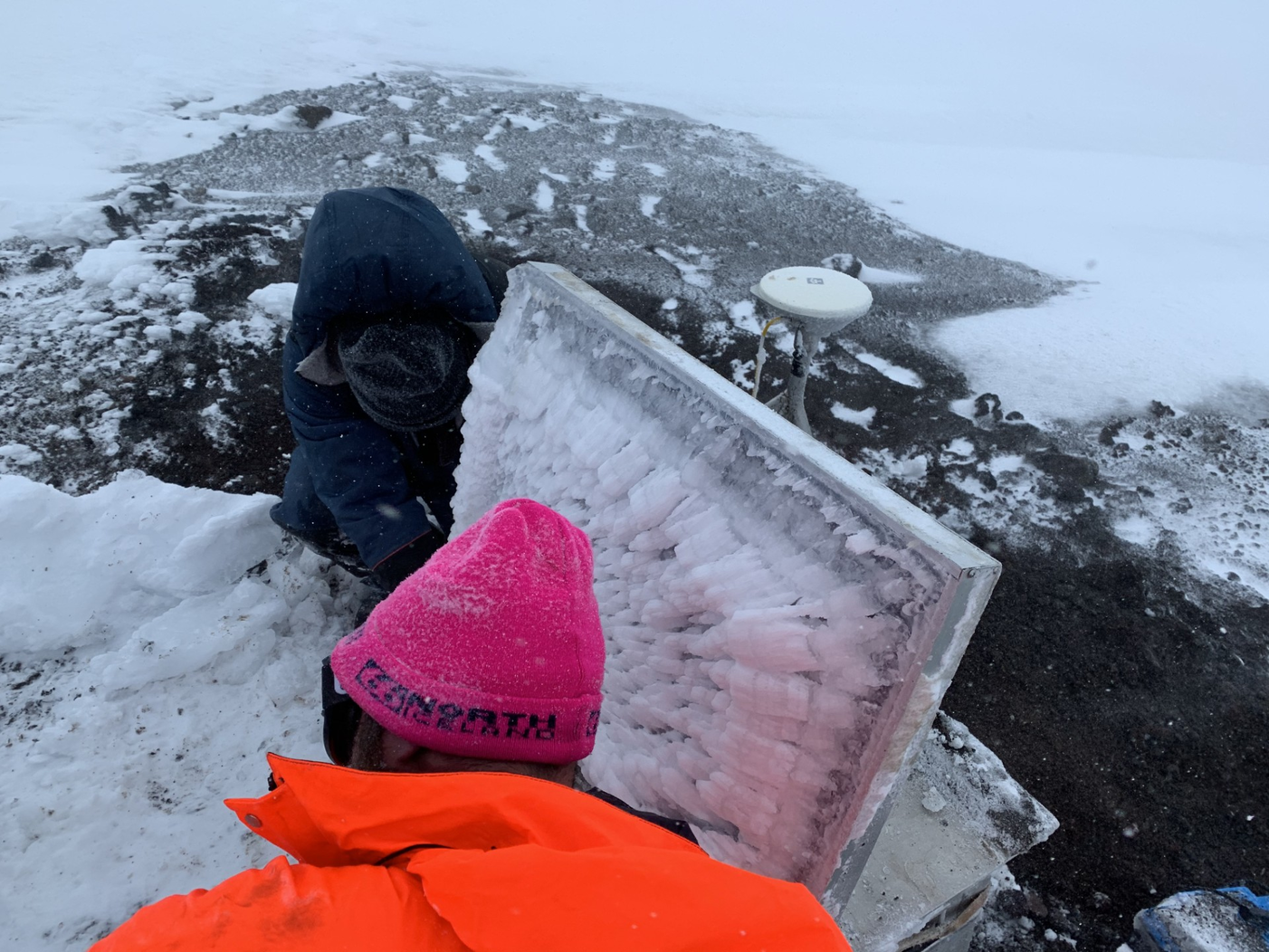In this presentation, I aim to illuminate the systems and methodologies I have developed to generate visual art. The works emerge from an ongoing inquiry into mapping — of landscapes, objects, and sensory experience. Selected examples from my practice will be shared, highlighting experimental approaches to perception and place.
The lecture will focus on fieldwork undertaken in locations such as the Grímsvötn caldera in Vatnajökull, Surtsey, Hawaii, and Greenland — sites I have engaged with through sustained observation, measurement, and sensory attunement, across repeated visits spanning the past threedecades. Stillness has become a central methodology: a quiet, deliberate approach to locate points of contact between perception and documentation.
Much of my work originates as a direct response to embodied encounters in the field — experiences that are later parsed, distilled, and sorted into conceptual compartments. One such category, “the strange context of things,” contains the generative source for many of the works that will be discussed in this lecture.
Hugarflug annual conference on artistic research
11. - 12. September 2025
Iceland University of the Arts
Anna Líndal
Visual Artist
Anna Líndal is a Reykjavík-based visual artist whose research-led practice explores the intersections of science, nature, and societal structures. Her work delves into the fragility of everyday life and examines the dynamic relationship between human systems and natural processes. Drawing from her own experiences in nature and her participation in expeditions with scientists, she investigates how measurement, scale, and temporality shape our understanding of the world, particularly how human and geological time scales converge in objects and environments.
Anna Líndal studied at the Icelandic College of Art and Crafts and completed her postgraduate studies at the Slade School of Fine Art, London in 1990, Advanced Master of Research in Art and Design at St Lucas, University College of Art & Design, Antwerp, Belgium, 2012.She has participated in numerous exhibitions both in Iceland and internationally, initiated various research and exhibition projects, contributed to conferences, and served in several professional advisory roles. Anna Líndal was a professor at the Department of Fine Art at the Iceland University of the Arts from 2000 to 2009.
Hildigunnur will generate a PDF rich with images from a complex world of intertwined systems. Through these images she will try to shed light on a human visual cognitive value system. Beauty will make an appearance and the economy will be omnipresent.
Hildigunnur Birgisdóttir
Visual Artist
Hildigunnur is known for her nuanced practice, which critically examines the global systems of production and distribution and the bizarre lives of the products they create. Her work calls attention to the objects that exist at the periphery of our vision, often the throwaway accessories of material culture: packing materials, price tags, signage, and systems of display. She looks for the beauty inherent in these objects, which have been shaped through countless aesthetic decisions, material limitations, production conditions, moral codes, deals, desires, and mistakes. Hildigunnur uses these human systems and interactions to create her artworks, harnessing the cultures and capabilities of manufacturers, fabricators, and commercial firms as part of her artistic process. Hildigunnur lives and works in Reykjavík. In 2024, Birgisdóttir represented the Icelandic Pavilion at the 60th Venice Art Biennale in Italy.
Thursday, 11. september, 2025 - 13:40 - 15:10
3x20 min Presentation + 3x10 min Discussion
Moderator: Hildur Bjarnadóttir
Room: Bratti
3009 Years
Bjarki Bragason‘s practice investigates the collision of human and geological time scales and how social and political paradigm shifts occur and manifest. His recent research process has revolved drawing parallels between two different trees from disparate places in the world and points in time. One of the trees present in the work is fragmented and has been buried under Breiðamerkurjökull glacier in South East Iceland for over three thousand years, while the other tree, also fragmented, stood in the Sagehen Creek forest in California‘s Sierra Nevada Mountains and was one of few trees in that forest to escape logging in the area’s clear cutting durin the 19th century California Gold Rush. In his research, Bjarki has formed dialogue with people in fields such as geology, biology and archaeology. His process is a series of attempts to gain understanding of place, time and how change is percieved.
His ongoing project, 3009 Years (2009-) is focused on his grandparents garden, which has since 2009 been in a state of wild growth, relatively unmaintained as the site has been on-and-off occupied by various residents while it awaits demolition. The garden, a meticulously planned urban space first formed in the mid 1940s has in his project been used as a theoretical mirror and framework which Bjarki has juxtaposed with site work in areas where geological events and climate change related phenomena can be seen in the land. This juxtaposition of a personal site, which has since 2024 been demolished, with a large-scale entropic environment indicative of the mass-effect of human-systems in the environment, the accelaration of time and change in the anthropocene, is an attempt to understand change at an umfathomable scale. The project has been presented in multiple exhibitions internationally and its remnants, exhibitions, are in the collections of the National Gallery of Iceland and the ASÍ museum in Iceland. ASÍ Museum has commissoned a retrospective publication of the project which is due in 2026.
Bjarki Bragason
Artist, Dean of Fine Art at Iceland University of the Arts
Bjarki (1983) studied at the Iceland University of the Arts, Universität der Künste - Berlin and CalArts in Los Angeles. He is Associate Professor and Dean of the Fine Art Department at the Iceland University of the Arts and has taught at various institutions in Iceland and abroad since 2007. His work has been represented in numerous solo- and group exhibitions internationally, and is in the collection of The Living Art Museum, National Gallery of Iceland, Gerðarsafn Museum, institutions and private collections in Iceland and abroad. Solo exhibitions include the Museum of Art History Vienna, Museum of Natural History, Vienna, Schildt Foundation, Finland, Living Art Museum and the ASÍ Museum among others. Group exhibitions include Reykjavik Art Museum, National Gallery of Iceland, Gerðarsafn Museum, Malmö Konsthall, Hverfisgallerí, Reykjavík, Human Resources Los Angeles, St. Paul Street Gallery at the Auckland University of Technology in New Zealand among others. His work has appeared in several publications and research journals and in 2018 his work was surveyed in “The Weather as a Medium: Towards a Meteorological Art”, by Janine Randerson published by MIT Press.
Artists Anna Líndal, Bjarki Bragason, and Hildigunnur Birgisdóttir each approach human-made systems in their work and artistic research in different ways, exploring how these systems connect with and intertwine with other systems in the environment. In this panel, they present talks reflecting key themes in their artistic practices. Hildigunnur discusses her art as a method for making sense of the materiality of humanity, the manifestations of late-capitalist conceptual systems, and objects that are often produced to be invisible—supporting other things and easing their journey from producer to consumer. Anna has for years conducted research in and on Surtsey and the Grímsvötn caldera, a natural phenomenon and subject of scientific study. Her talk summarizes the working process and how she translates scientific data into an art practice. Bjarki presents his research project 3009 Years, in which he has followed the gradual abandonment and eventual demolition of a backyard, observing the site become a symbol of broader entropic developments in the environment during the Anthropocene.



